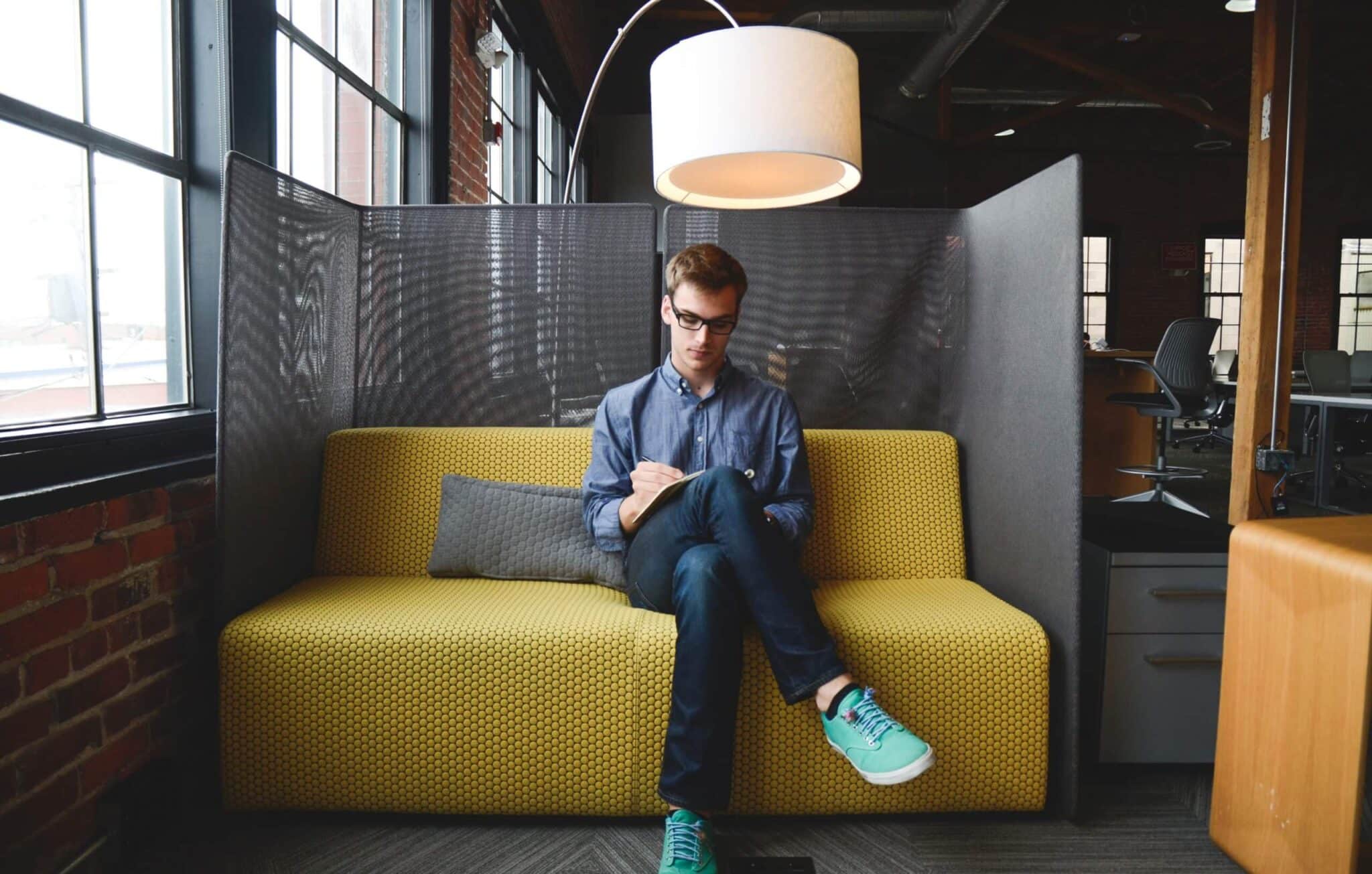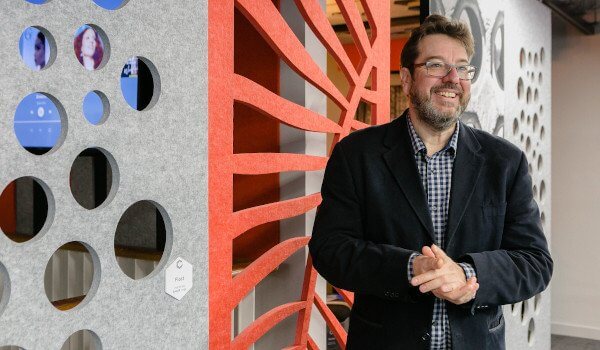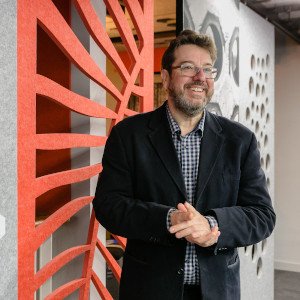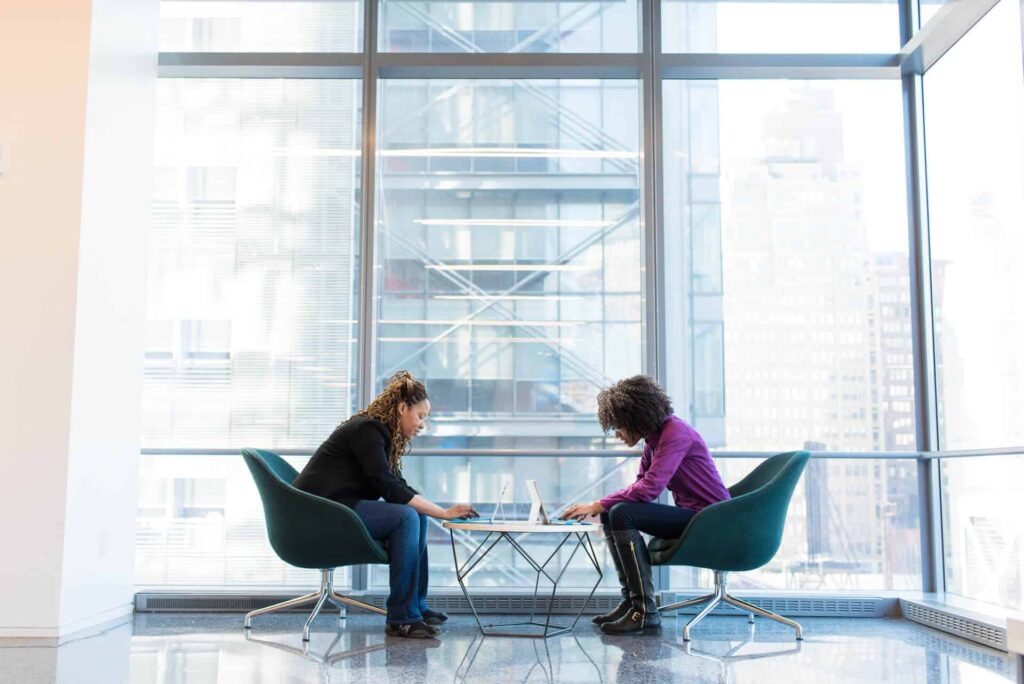Environmental psychologist and workplace consultant Nigel Oseland chats with us about how a deeper understanding of office occupants can impact workplace performance.
Customized work settings have become all the rage in many of today’s workplaces. Employees want to have options when it comes to how they work. For the most part, it makes sense. But what happens when you start offering these work settings simply for the sake of delivering options?
This is the type of question that often hits Nigel Osleand’s radar. The Director of Workplace Unlimited combines his experience as a workplace consultant and environmental psychologist to get deeper into the minds of office occupants and help businesses make the most of their workplaces.
In addition to your work as a workplace consultant, you’re also a chartered environmental psychologist. Could you tell us how this skill set helps you approach workplace strategies from a different perspective?
Oseland: Environmental psychology is a relatively recent strand of psychology that has only been officially around since the 1960s. It’s centered around things such as the behavior, performance, emotions, and motivations of people in the built environment. We study how people interact in these environments.
Most of us are focused on offices, schools, hospitals, and other built environments. We look at basic psychological elements such how people react and behave, how they respond in terms of their requirements and what they need, and how these spaces might make them feel.
When it comes to the workplace and workplace strategy in particular, I’m interested in people’s requirements—both their psychological and physiological needs. I look into how the workplace can help people perform their jobs better. In an office environment, we’re interested in things like comfort, satisfaction, creativity, and collaboration. The different elements that make up workplace performance.
When I create workplace strategies, I appreciate that most organizations are still looking at how they can make their new spaces efficient in terms of cost and space. We always try to balance that with the effectiveness of the space and how it impacts occupants as well. For me, it’s about trying to address that balance. Don’t push the envelope so much that you start to destroy performance and well-being. At the end of the day, an office is a space for people to work in. There’s no point in focusing on only one part of the equation like reducing cost or space at the price of being detrimental to occupants.

Some of the biggest workplace trends right now are centered on customization. From an environmental psychological perspective, how important is it to offer unique work settings for individual workers?
Oseland: The cheapest solution is to offer a homogeneous workspace. I’m personally not a fan of that and prefer activity-based working: let’s look into individual tasks, work activities, and build a workplace that supports those particular tasks and activities.
I’ve even gone beyond that now. I think we have to look at personality and the preferences of individuals in the workplace and see if we can cater to those things. Our research also shows that introverts and extroverts have very different requirements when it comes to office space. A lot of trendy office spaces tend to focus on having stimulating, colorful, buzzy spaces that aren’t actually great for introverts.
I think it starts with understanding the workforce. If you have a lot of people in marketing or sales and the workforce is gregarious and outgoing then you should provide more of those stimulating, colorful workspaces. If the majority of your workforce is made up of people who are more introverted, more conscientious, and need to focus and concentrate then we need to provide a more subdued, calmer workspace to cater to them.

You brought up an interesting point about introverts and extroverts in the workplace. When you look at social common areas—particularly popular among startups—that include perks like ping pong tables and even beer on tap, do you think these options cater more towards extroverted personalities and alienate introverts?
Oseland: Most of these social common areas are obviously aimed at bringing people together. It’s not that introverts are antisocial—I don’t want to put that message out there—but the extroverts are always going to be more comfortable around people versus introverts who are more comfortable in their own space and company.
I remember during one of my very first projects, I worked with a company that had a group of developers who were almost plugged into their machines. What we found was that when those individuals came up for air, they actually wanted to have a bit of a chat with colleagues and socialize. But some of them didn’t. Some of them would rather relax with a book or have a coffee alone.
When we designed breakout spaces for this company, we kept that in mind. We had chill-out spaces and social, cafe-like areas. We also found that their marketing and sales team didn’t really want to socialize too much on their breaks—they wanted a little space and time for themselves. Sometimes extroverts want time for themselves and introverts want to be around people. As environmental psychologists, it’s up to us to look into the patterns of people.

What do you think these types of unique work settings can do for overall organizational performance?
Oseland: To get the best organizational performance, let’s start with individual performance. If we can get individuals performing, the teams will perform, and if those teams perform, then the organization performs. It all goes back to looking at the individual and what they require to perform their jobs to the fullest.
Far too often, we just give people a desk and they do everything at their desk. There are all sorts of different spaces you can work in now. Most meetings, for example, don’t necessarily have to take place in a formal meeting room. If it comes to one-on-one meetings, we might create smaller, cozier spaces to support those conversations.
You might even have that one-on-one in a cafe setting which, despite being a little noisier, can actually create a sense of privacy. We’ve done a lot of research on workplace noise and it’s not the level of sound that causes issues per se—it’s the distractions and interruptions from colleagues.

Personal space is another important factor in the workplace. What do you think is the ideal amount of space workers should have between desks in an office?
Oseland: I still refer to the concept of proxemics by Edward T. Hall. He came up with the notion that we have these bubbles of space around us that range from intimate to social space. It’s a nice idea in theory, but I think we now know that those bubbles vary by individuals and culture.
I think we need to be aware of the fact that as desks continue to get smaller, we may be encroaching on personal space. When I first started working at an architectural practice at the beginning of my career, my desk was 2 meters (6.5 feet). The standard in the United Kingdom is now 1.4 meters (4.5 feet).
Although our industry is now standardized at 1.4 meters, I’ve worked with companies that have rolled out one-meter desks. That would definitely qualify as Hall’s intimate space bubble. At that proximity, you’re clearly going to have problems with noise and other distractions. If you lay out office spaces with those kinds of densities then you’re also going to have problems with the heating and cooling of the building.
Find out more about how Workplace Unlimited can help your organization build a successful workplace strategy at their website.
What kind of customized work settings do you need to perform at your best? Join the conversation and leave us a comment below.
Photos: Nigel Oseland, TeroVesalainen, Startup Stock Photos, mentatdgt, fauxels





